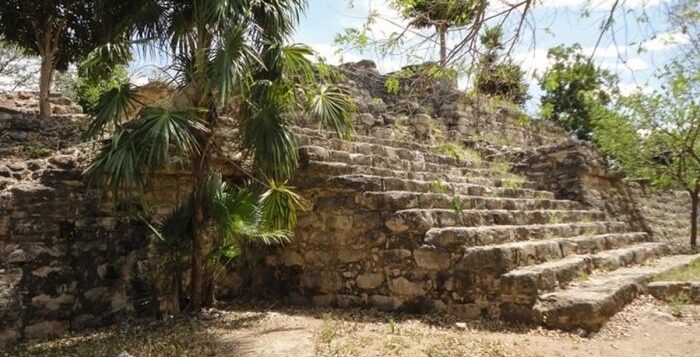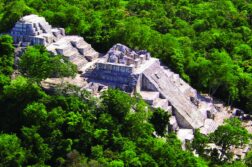MERIDA, Yucatán (Times Media Mexico/INAH) – This year, the National Institute of Anthropology and History (INAH) “discovered” six Mayan pyramids in five municipalities in the state of Yucatán.
According to the agency, two of these structures are located in the archaeological zone of “Chaltún Ha” in the municipality of Izamal, and the main one is 8 meters high and 100 meters long.
The second most important is Kulubá, in the municipality of Tizimín in eastern Yucatán and is 50 meters long and 6 meters high. The other four are smaller and remain hidden in the jungle.
“The architectural restoration work represented a meticulous exploration and involved a very detailed record of the architectural elements that we are going to identify and return those stones that collapsed to their original place,” explained José Huchim, an archaeologist at INAH.
Likewise, Nahim Alcocer, head of the INAH Archaeological Field, said that in these Mayan pyramids, vestiges such as human remains were found in burials, pottery, weapons, and various other objects belonging to the Mayan elite.
We have reported in multiple ocasions in The Yucatan Times, that in the state of Yucatán, there are more than 2,000 Mayan zones and 80 pyramids, the most important of which are Kukulcán in Chichén-Itzá, El Adivino in Uxmal and Kinich Kakmó in Izamal amongst others.
Other pyramids are located in the archaeological reserves of Mérida, which are still being consolidated and studied so that, in the immediate future, they will be open to the public.
Several of the sites above mentioned have been reported in the Archaeological Atlás of Yucatán since several years ago, although they have never been explored enough to rehabilitate and open to the public.
In 2018, the possibility that Kulubá would be opened to the public after many years of investigation and rescue actions was mentioned, it has not happened yet.
Currently the place is classified as: “16Qe” of the archaeological Atlas of Yucatan (Garza Tarazona and Kurjack, 1980), as a site of “rank III”.
As for Chaltun Há, it is about structures that are located south of Izamal, which until before the pandemic could be visited, although one had to go through the thick local “monte” which made the site to a certain point inaccessible since the the place had been abandoned for several years by the INAH and local authorities.





